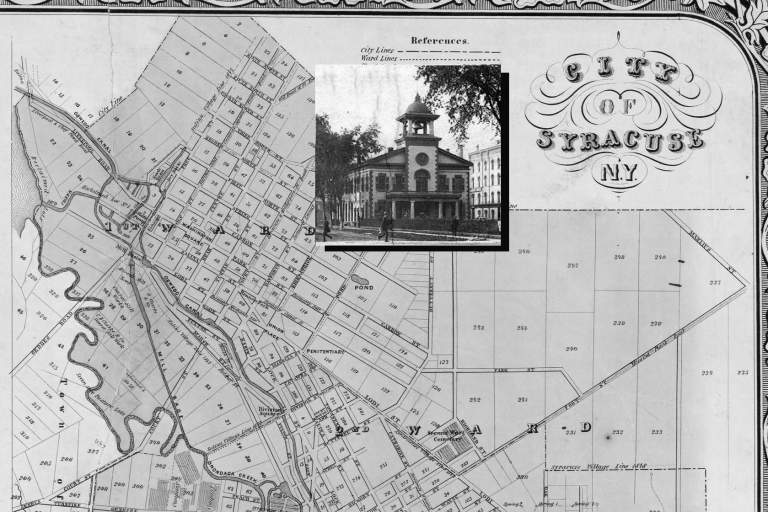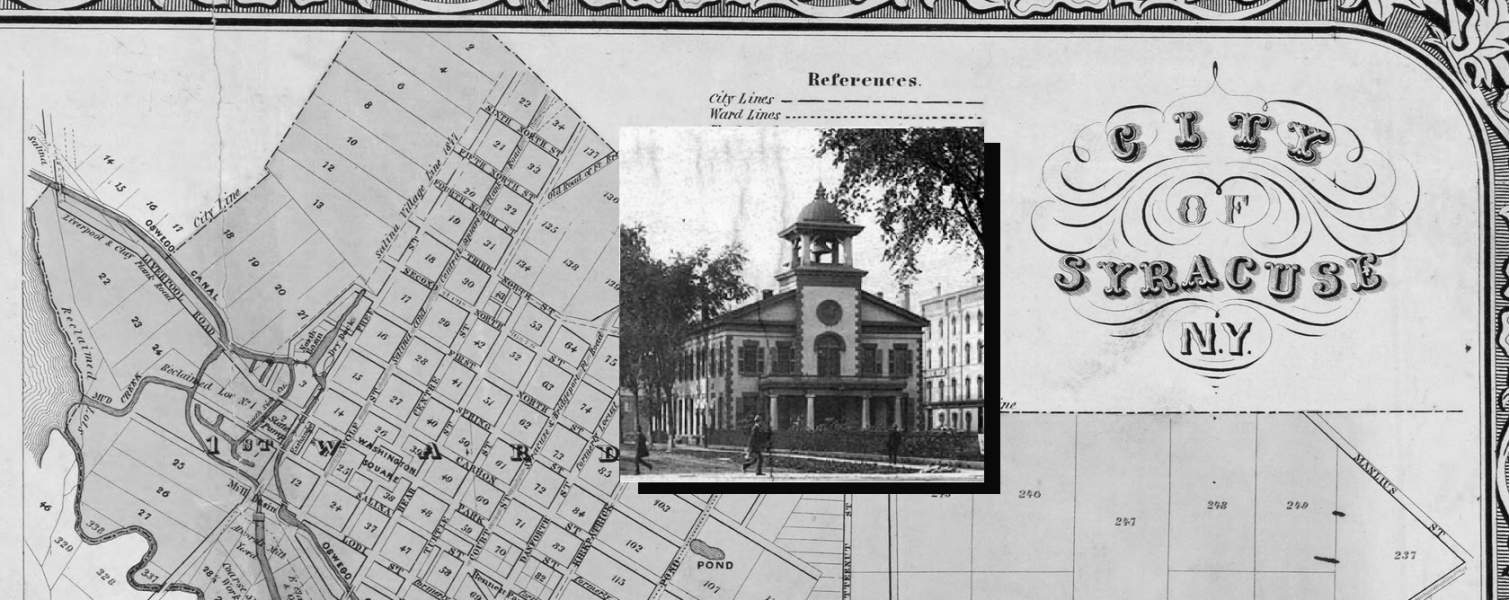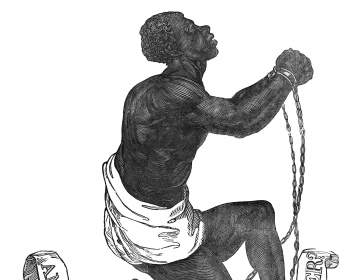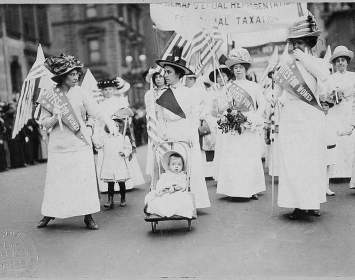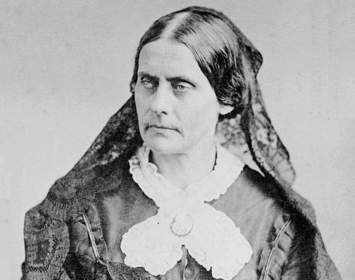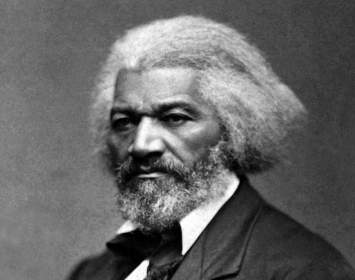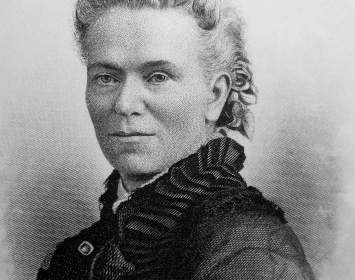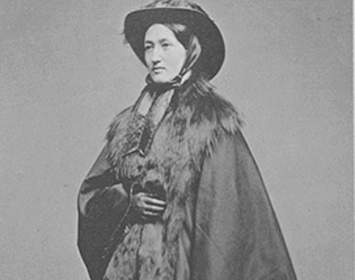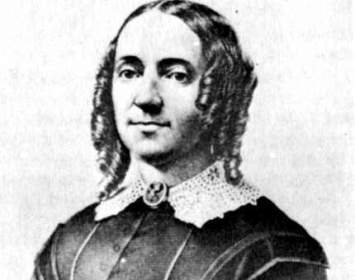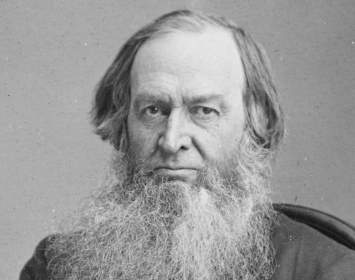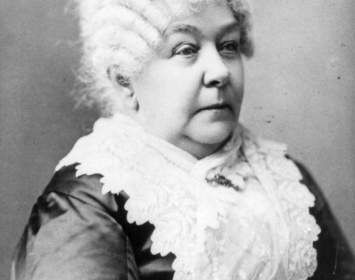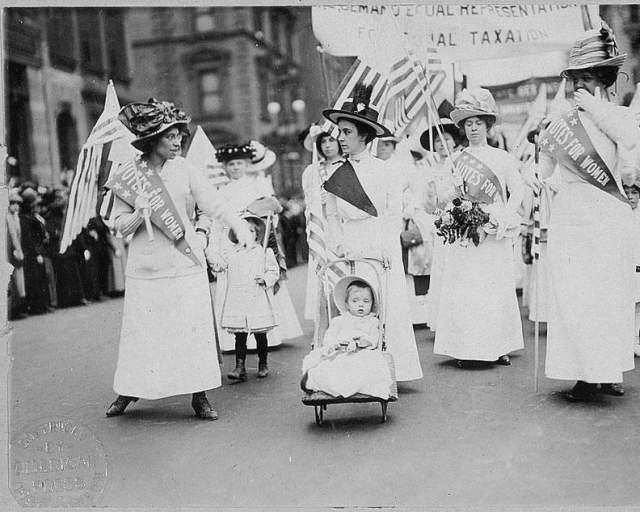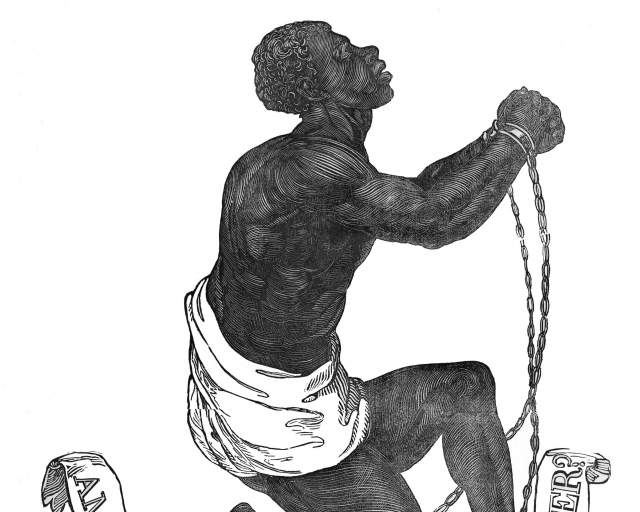The location variously known as Market Square, Market Hall, and the first Syracuse City Hall was the site of two noteworthy reform events: a National Woman's Rights Convention in September 1852 and the inaugural convention of the Radical Abolition Party in June 1855.
1852 Woman's Rights Convention. The 1848 Woman’s Rights Convention at Seneca Falls had been followed in 1850 by the first in a series of annual conventions designed to raise the profile of the woman’s rights movement. (Nineteenth-century practice was to use the singular, woman's, when referring to women as a class; later practice was to use the plural, women's.) This event took place at Worcester, Massachusetts. The second annual convention (1851) was held in Worcester also. On September 8–10, 1852, the Third National Woman’s Rights Convention was held in Syracuse at the newly named City Hall (see below). A capacity crowd—two thousand people from eight states and Canada—attended. Because the site was nearer to Seneca Falls than Worcester had been, a record number of delegates who had signed the Declaration of Sentiments adopted at Seneca Falls were able to attend.
1855 Abolition Convention and Formation of Radical Abolition Party. On June 26–28, 1855, the Radical Abolition Party was formed at a convention at City Hall. This short-lived party arose as efforts by abolitionists to run candidates for high political office were being abandoned. The Radical Abolition Party resulted from a coalition between the old Liberty League, championed by Gerrit Smith and downstate abolitionists including Lewis Tappan. Frederick Douglass, William Goodell, and other high-profile abolitionists attended. The event was chaired by Dr. James McCune Smith, an African American abolitionist from downstate New York. So far as is known, this marked the first time an African American chaired a political convention in the United States.
The Building and Site. The venue for both conventions was first known as Market Hall. It was a two-story structure on Market Square, located at the junction of the Erie and Oswego Canals. The building initially contained marketplace stalls. In 1852, the year of the woman's rights convention and four years after Syracuse was incorporated as a city, the market stalls were replaced by municipal offices, and the building was renamed City Hall. By the end of the Civil War, it was clear that a vibrant Syracuse had outgrown this structure, but it was not until 1889 that a commission was empaneled to oversee construction of a replacement. The new City Hall opened in 1892, designed by architect Charles Erastus Colton in the Richardsonian Romanesque style, built of local limestone and anchored by a dramatic 165-foot bell tower. The structure continues to serve as Syracuse’s seat of government today.
Thanks to Norman Dann for research assistance.
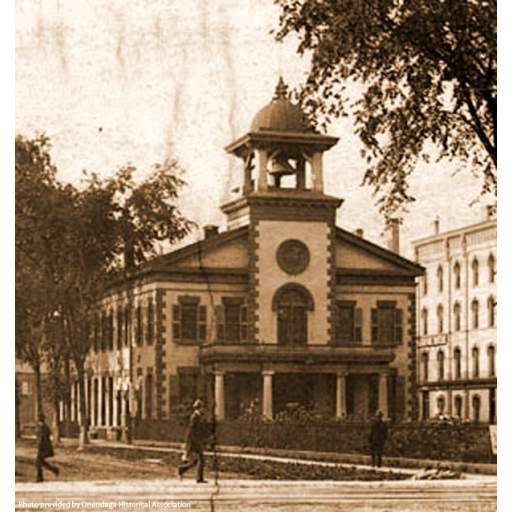
Market Hall
Syracuse's Market Hall, renamed City Hall in the same year as the Third Annual National Woman's Rights Convention (1852). This photo was taken circa 1889; the bell tower was a late addition (1857) and was not part of the structure at the time of the Woman's Rights Convention.
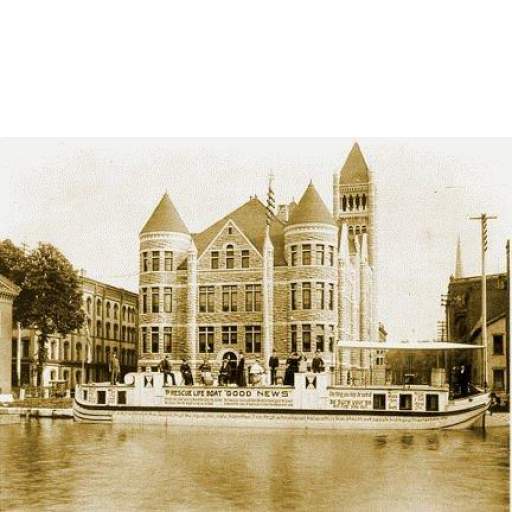
City Hall 1895
Syracuse City Hall as it appeared in 1895, just three years after its completion. At that time, the building faced the Erie Canal, with its main entrance on Water Street; the side seen here is now the rear of the structure. The rescue boat Good News floats in the canal basin in front of the building.
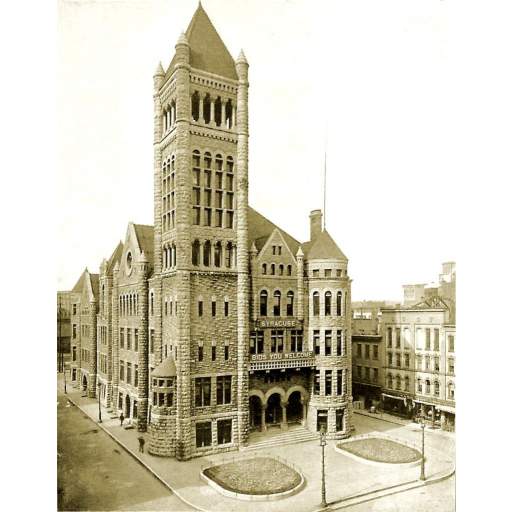
City Hall 1925
One year before this photo was taken in 1925, the Erie Canal had been filled in where it passed through downtown Syracuse. City Hall's rear entrance, facing Washington Street, became its main entrance. "Syracuse Bids You Welcome," says the illuminated sign.
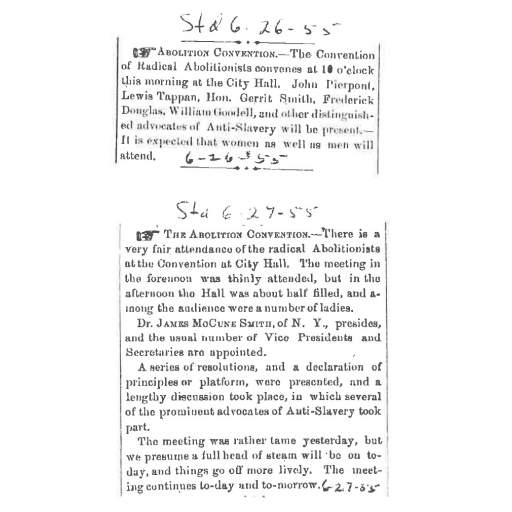
Newspaper reports of Radical Abolition Convention
Contemporary newspaper accounts of the first two days of the Radical Abolition Party convention. Courtesy Onondaga Historical Association.
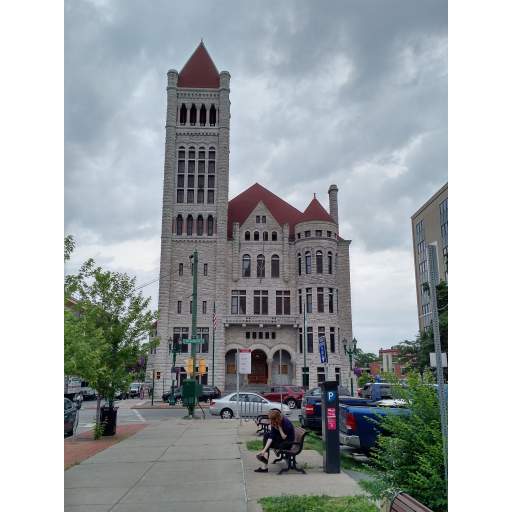
Syracuse City Hall
Front view of Syracuse City Hall today. In 1924, the front entrance was shifted from the Erie Canal (Water Street) to the present location, facing Washington Street. This was a complex architectural undertaking; today there is no hint that the Washington Street entrance was not the building's original entrance.
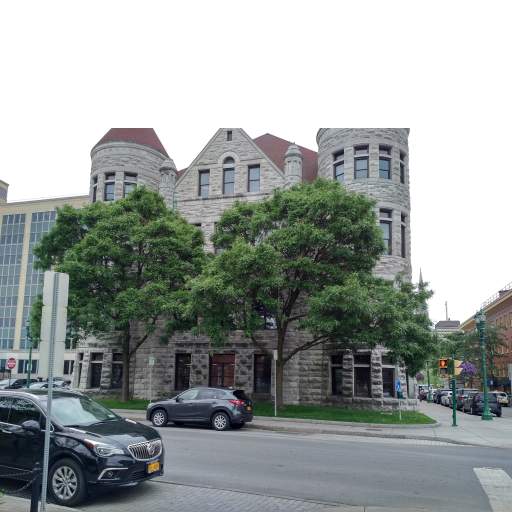
Syracuse City Hall, rear view
Rear view of Syracuse City Hall looks across Water Street, which prior to 1924 was occupied by the Erie Canal. The building's original front entrance would have been where the three tall windows between the tall trees are now.
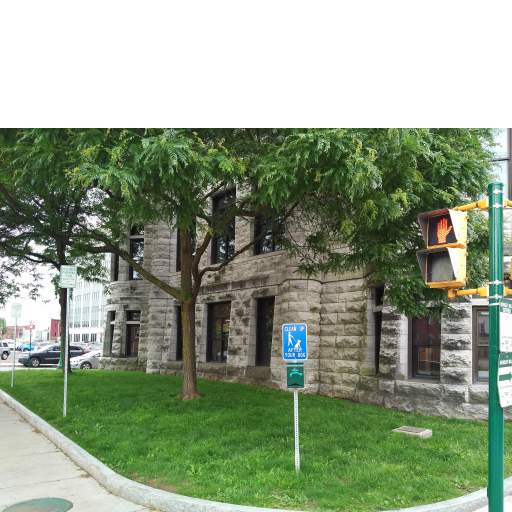
Syracuse City Hall, rear detail
No expense was spared to match City Hall's 1892 masonry construction when the main entrance was removed from the Canal side and added to the Washington Street side. The Canal side (now facing Water Street) betrays no hint that its simple windows are not original.
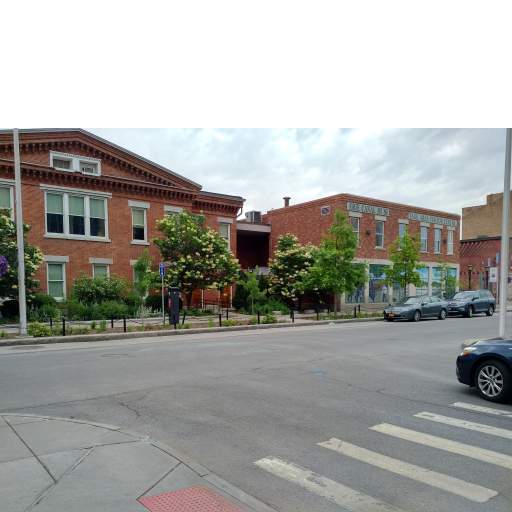
Water Street
Water Street, created when the original Erie Canal channel crossing downtown Syracuse was filled in during 1924. View looks away from the rear (former Canal side) of City Hall. Building at right is the Erie Canal Museum and city visitor center.
Associated Historical Events
Third National Woman’s Rights Convention
September 8–10, 1852
Radical Abolition Party Formation
June 26–28, 1855
